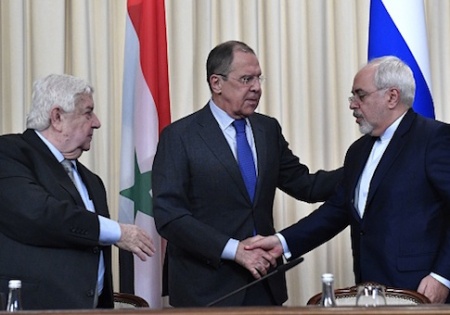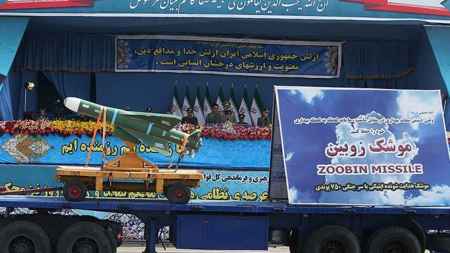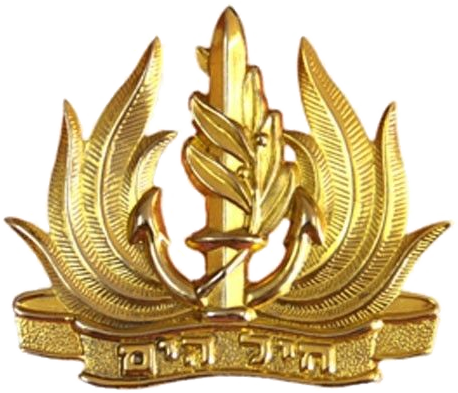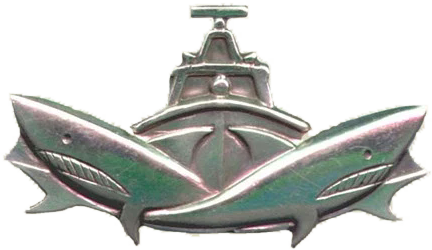The new Persian Empire, Israel Hayom, Clifford D. May, September 29, 2017
Decades ago, Khomeini envisioned what now seems to be coming to pass. In his 1970 book, “Velayat-e faqih” (also known as “Islamic Government”) he wrote: “We have set as our goal the worldwide spread of the influence of Islam.” Over time, he expected Iran to become so powerful that “none of the governments existing in the world would be able to resist it; they would all capitulate.”
It’s essential that Trump and his advisers grasp what too many others still have not: Iran’s rulers represent a cause, the fulfillment of “a dream of imperial rule,” as Kissinger phrased it. If the United States does not stop them – if, on the contrary, they continue to manipulate Americans into assisting and enabling them in Syria and elsewhere – no one else will stand in their way.
********************************
Eleven years ago, Henry Kissinger famously said that Iran’s rulers must “decide whether they are representing a cause or a nation.” If the latter, Iranian and American interests would be “compatible.” As for the former: “If Tehran insists on combining the Persian imperial tradition with contemporary Islamic fervor, then a collision with America is unavoidable.”
Since then, Iran’s rulers have left no room for doubt. They’ve been aggressively spreading their Islamic Revolution and constructing what can only be called a new Persian Empire. That will surprise no one who has seriously studied the ideology of Ayatollah Ruhollah Khomeini, founder of the Islamic republic. What might: Their project has received significant support from the United States.
I’m not suggesting that was the intention of American policymakers. But it’s certainly been the result. The toppling of Saddam Hussein by President George W. Bush in 2003 eliminated Iran’s archenemy and rival. That might not have been a serious dilemma had Iraq subsequently been transformed into a reliable American ally.
But you know what came next: an insurgency, waged by al-Qaida in Iraq reinforced by Saddam loyalists. Iranian-backed Shia militias also went to war against American troops in Iraq. Eventually, Bush ordered the “surge.” American troops under the leadership of Gen. David Petraeus fought alongside Sunni tribes brutalized by al-Qaida and fearful of Iran. In the end, this alliance decimated jihadi forces in Iraq – Sunni and Shia alike.
By 2011, Iraq was, as then-President Barack Obama declared, “sovereign” and “stable.” He also called it “self-reliant,” which was incorrect. The U.S. military, in coordination with U.S. diplomats, had been balancing powers and brokering interests among Iraq’s Shia, Sunni and Kurdish communities. Once Obama withdrew American troops, the erosion of Iraq’s stability and sovereignty was inevitable.
Iran’s rulers began twisting arms in Baghdad, in particular encouraging Shia sectarianism. Iraq’s Sunnis now had no defender other than al-Qaida which, with the Americans gone, was revived and reincarnated as the Islamic State.
Which brings us to the present. The U.S. is playing a key role in the defeat of the Islamic State in Syria and Iraq. Journalists are reporting that as a victory. Historians of the future may disagree. If the territories taken from the Islamic State are bequeathed to the Islamic republic, American troops will have served, objectively, as Iran’s expeditionary forces.
This would not be the only critical support the U.S. has given to the clerical regime. In the early years of the Obama administration, serious sanctions hobbled Iran’s economy and restricted its offensive capabilities. But the pressure was significantly relieved in exchange for an interim agreement on Iran’s nuclear weapons program.
Next came the final agreement, the Joint Comprehensive Plan of Action, and the lifting of most sanctions, coupled with the tens of billions of dollars in frozen oil revenues Iran received directly from the U.S. and the hundreds of billions more it will receive from European and Asian trade and investment.
This windfall has allowed Iran’s rulers to defend their Syrian satrap, Bashar al-Assad, both with their own elite forces and those of Hezbollah, their Lebanon-based proxy militia. They also have organized and funded Shia militias in Syria and Iraq.
Thousands of Afghan and Pakistani Shia are being recruited for those militias. They reportedly receive salaries of $600 a month and promises of future employment in Iran, assuming, of course, that they survive. Others may stay permanently in Syria. In other words, Iran’s imperial project is becoming a colonial project as well.
I’m among those who believe President Donald Trump was correct not to give up on Afghanistan. The consequences of defeat at the hands of the Taliban and al-Qaida would have been dire – if not immediately, then over the long term. That said, the strategic value of Afghanistan pales in comparison with that of Syria and Iraq, the heart of the Arab/Muslim Middle East. If we can’t win everywhere – though I hope that, as a superpower, we can – there’s no question where our priorities should lie.
Imagine what it will mean if Iran succeeds in becoming the hegemon in Iraq, Syria and Lebanon; also Yemen, which sits on one of the world’s most strategic waterways. Imagine, too, if this incipient empire goes on to acquire nuclear weapons and the means to deliver them to American targets – an eventuality delayed but not halted under the flawed JCPOA.
Jordan, Kuwait, Bahrain, Saudi Arabia, Israel and other countries would be seriously threatened. Using Syrian ports on the Mediterranean, Iran would extend its influence westward as well.
For Machiavellian reasons, Russia’s Vladimir Putin supports these ambitions. North Korea, a client of China, cooperates with Iran’s rulers – on missile development, illicit financial networks and perhaps nuclear weapons – even as it hones its own ability to threaten Americans.
Decades ago, Khomeini envisioned what now seems to be coming to pass. In his 1970 book, “Velayat-e faqih” (also known as “Islamic Government”) he wrote: “We have set as our goal the worldwide spread of the influence of Islam.” Over time, he expected Iran to become so powerful that “none of the governments existing in the world would be able to resist it; they would all capitulate.”
It’s essential that Trump and his advisers grasp what too many others still have not: Iran’s rulers represent a cause, the fulfillment of “a dream of imperial rule,” as Kissinger phrased it. If the United States does not stop them – if, on the contrary, they continue to manipulate Americans into assisting and enabling them in Syria and elsewhere – no one else will stand in their way.








Recent Comments